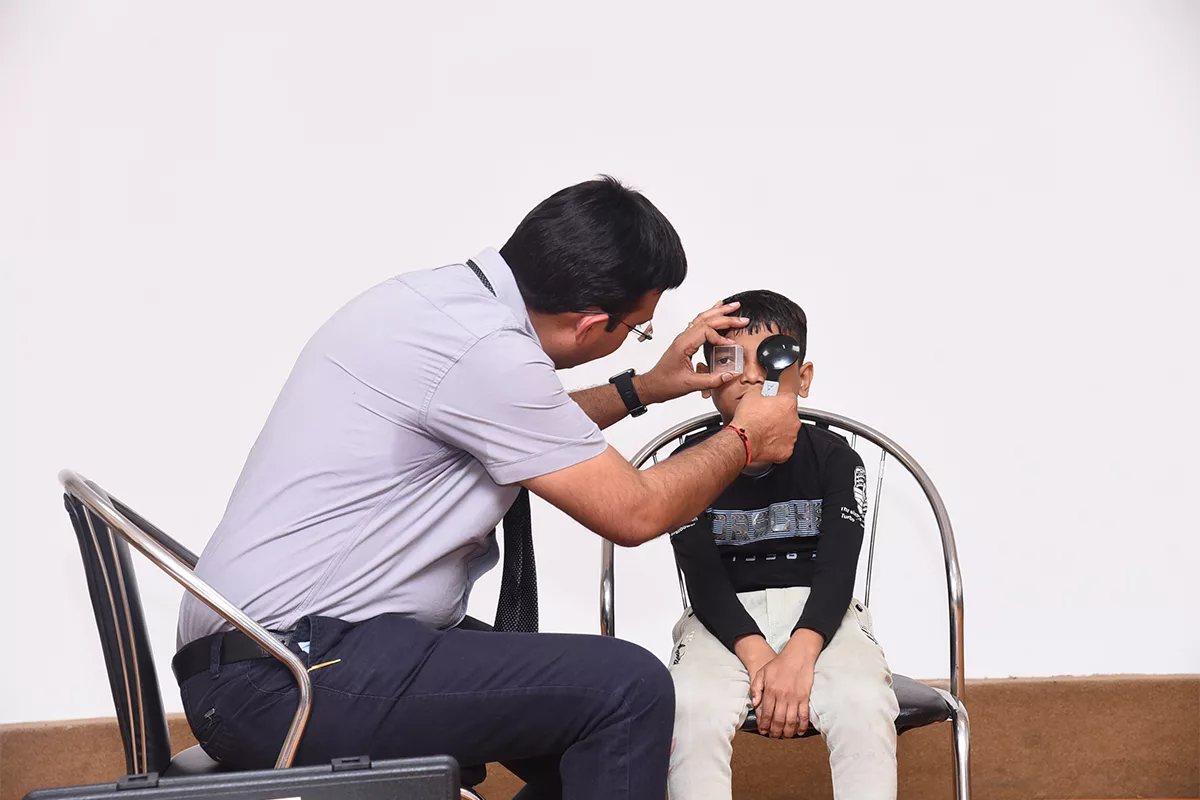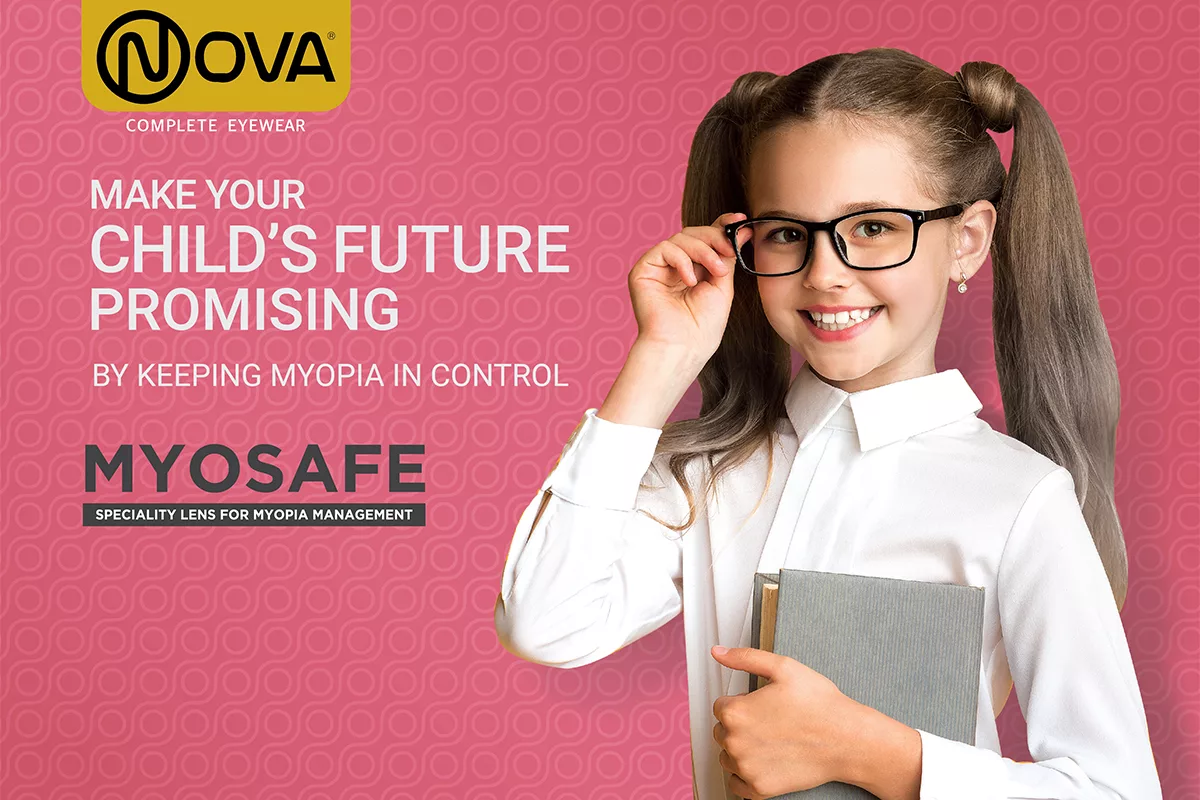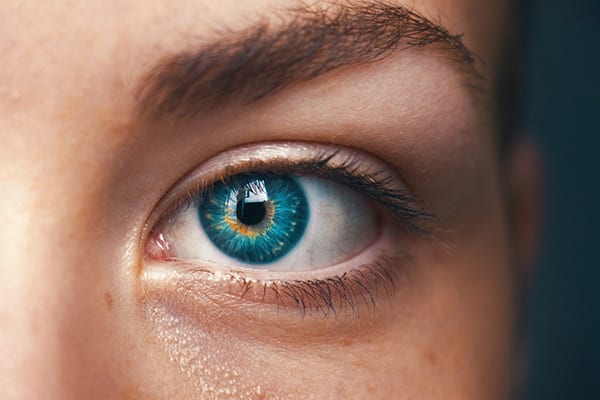Often patients complain of headaches, the cause of which is difficult to identify. Often the cause is a non-strabismic binocular vision dysfunction. Such vision problems have to be treated by Vision Therapy
Vision therapy, a type of physical therapy for the eyes and brain, is a highly effective non-surgical treatment for many common visual problems such as lazy eye, eye movement disorders, double vision, non-strabismic binocular dysfunctions, focusing disorders, amblyopia, nystagmus, and visual perceptual disorders related to information processing.
Behavioral vision therapy is practiced primarily by optometrists who specialize in this field. It treats additional problems including difficulties of visual attention and concentration, which may manifest as an inability to sustain focus or to shift focus from one area of space to another. The ability to shift the focus of visual attention from one place in space to another affects many aspects of life including reading, most vocations, and most avocations.
However, not all such therapy is limited to disorders of the visual system. Professional athletes, for example, may use vision therapy to enhance sensitivity to peripheral vision on the playing field or increase responsiveness to fast-moving objects.
There is widespread acceptance of vision therapy indications for convergence insufficiency. Patients who experience eyestrain, “tired” eyes, or diplopia (double vision) while reading or performing other near work, and who have convergence insufficiency may benefit from vision therapy. Headaches, which are a very common problem and mostly ignored have multiple reasons. One of them being binocular vision disorders. Vision therapy actually improves the quality of life for such patients.
Vision Therapy has been a very important feature in treating vision issues in children. Some children are just not able to study in schools in spite of having a good IQ. Many times the reason being information processing disorder. On physical examination, eyes appear to be normal but they fail to process the information effectively to the brain. Such things are easily treated with home-based and vision therapy. Reading problems in children with Dyslexia are beautifully treated with color therapy.
Thanks to the increased number of 3D movies, adults and children have started realising the difficulty in appreciating depth. Again many of the underlying causes are treated with vision therapy, which enhances the 3D view.
Various vision therapy softwares are available now, making these exercises convenient, and interesting for children. A routine comprehensive eye exam with a Binocular vision workup is a must every two years for children and symptomatic adults.
Vision Therapy is supervised by optometric vision care professionals and many types of specialized and/or medical equipment are used in Vision Therapy programs, such as:
- Prescription lenses (regulated medical devices);
- Therapeutic lenses (regulated medical devices);
- Prisms (regulated medical devices);
- Optical filters;
- Eye patches or occluders
- Colored targets
- Electronic targets with timing mechanisms;
- Computer software;
- Vestibular (balance) equipment
The first step in any Vision Therapy program is a comprehensive vision examination. Following a thorough evaluation, a qualified optometric vision care professional can advise the candidate as to whether Vision Therapy would be the appropriate treatment.
There are various Myths when it comes to the eyes, and these myths spread incorrect information and can be really harmful. Let us bust some myths!
Myth– Vision Therapy should not be done at a younger age.
Fact– Age is no bar, Vision Therapy works by strengthening the neural connections between the eyes and the brain to allow two eyes to work more effectively in coordination.
Myth– Surgery is the only option for the misalignment of the eye.
Fact– Not always, some variety of misalignment is treated only with glasses and Vision Therapy.
Myth-Wearing glasses makes one addictive and that in turn increases the power of the spectacle glasses.
Fact– Not true, with age the number of the eye remains the same and sometimes it even reduces.
Myth– 6/6 (20/20) Visual activity is enough as a good quality of vision.
Fact– 6/6 is only the quantity of vision. Furthermore, evaluation is required to determine the quality of vision.
Myth– Vision Therapy has to be practiced life long.
Fact– Like any other medicine, Vision Therapy is also tapered and stopped once proved effective.
Myth– Vision Therapy is very expensive and done only in the clinic.
Fact– There are many home-based exercises as well.
Myth– There is no need for in-office therapy, doing exercise at home is just as effective.
Fact– Even though Vision Therapy exercises performed at home can be effective, studies have shown that in-office therapy sessions result in greater improvement.
An individual, who experiences following can undergo a complete ocular evaluation to consider vision therapy:
-
Reading and/or using a computer causes eyes to tear, itch, or hurt. -
Jerky eye movements. -
Eyes that cross or turn in or out. -
Squinting, eye rubbing, or excessive blinking. -
Blurred vision after reading. -
Double vision. -
Eye ache, eye fatigue, and discomfort. -
Headaches, dizziness, nausea, or fatigue after reading. -
Head tilting, closing or blocking one eye when reading. -
Skips lines or loses place when reading. -
Difficulty tracking moving objects. -
Misaligns letters or numbers. -
Unusual posture or moves head closely to see a book or paper. -
Avoidance of near work such as reading. -
When reading, words, letters, or lines run together or jump around. -
Difficulty concentrating or comprehending reading material. -
Persistent reversals of numbers, letters, or words after second grade. -
Writes crooked or poorly spaced. -
Poor eye-hand coordination. -
Inconsistent or poor sports performance.













